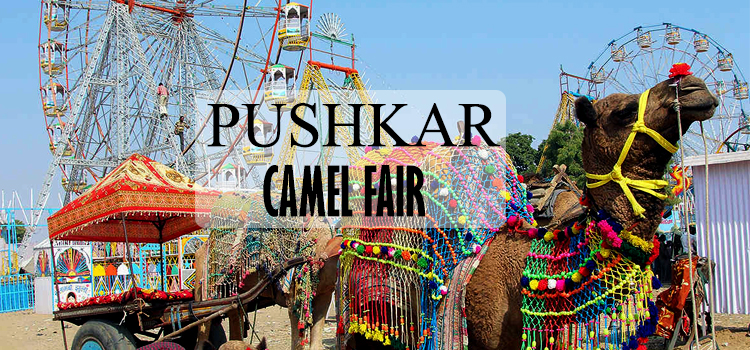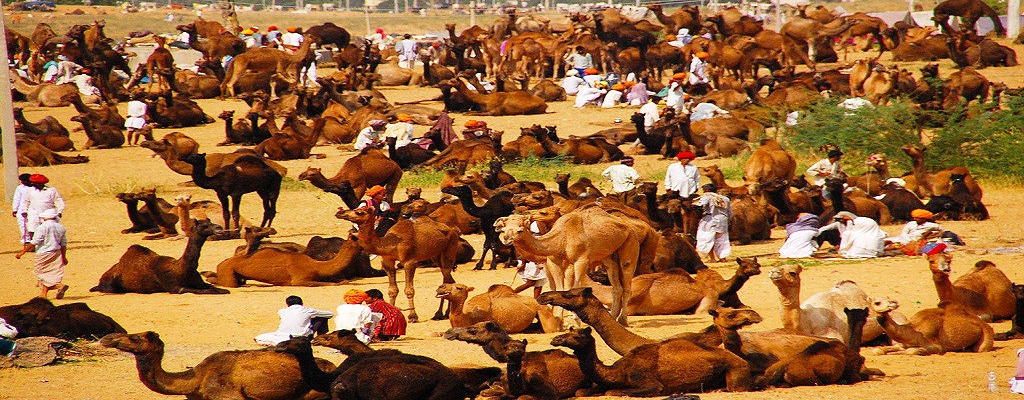The sleepy lakeside settlement of Pushkar lies in the Northwest Ajmer in the state of Rajasthan. This sacred town of the Hindus, also known as the Lourdes of the East, finds references in the Hindu epics of Mahabharata and Ramayana, and takes pride for being a site to the only temple of the God of Creation, Brahma. With over 400 temples and 52 bathing ghats, very few places can match the religious fervor associated with this town. Come the month of Kartik and the quaint and arid town comes alive with a frenzied burst of activity. With the gaily attired local folks, the rich Rajasthani music, folklores of gallantry and the holy chants straight out of the scriptures reverberating in the air, the town gets all prepared to host the world renowned Pushkar Fair. This is the time when livestock owners from all over the country come here to trade their camels as well as other species. It also marks the time when thousands of devotees flock to the holy lake of Pushkar and take a dip.

Pushkar Camel Fair :-
The Pushkar Fair begins on Kartik Shukla Ekadashi, which falls in the month of October-November and goes on for five long days till Kartik Purnima. The fair is synonymous to a cattle fair, as mass trading of cattle, such as camels, horses, cows, goats, and sheep, take place during these five days. After the selling and purchasing of popular breeds, parading of the well bred and decked up cattle take place. Although various animals are traded, camels rule the roost. The camels are washed spanky clean and adorned with various cloths to form interesting patterns. Stalls selling jewelry and other finery for camels are set up. Silver bells and bangles around their hoofs jingle when they walk past the golden sand dunes. A ritual involves piercing the camel’s nose. With over 25,000 camels exchanged, the Pushkar Fair is arguably the world’s largest camel fair.

Camel Fair Another striking feature of the Pushkar Fair is the camel competition. Beautifully decorated camels parade while competing in a beauty contest and the best bedecked camel wins the prize. In one of the competition, large numbers of people are made to sit on the camel’s back. The camel now lopes across the sand and throws its riders off its back, amidst cheers and jeers from thousands of spectators. The camel which succeeds in accommodating the maximum number of people on its back, wins the competition. Though spectators take pleasure in the festivity and fervor, it is the animal that enjoys the most. The camels are seen preening before the crowd, seeming to enjoy every bit of attention that they receive during these five days.
The fair is also the time when the varied art of colorful Rajasthan is exhibited in front of the curious tourists. From jewelry items for cattle, ranging from saddles, saddle-straps, beads, strings and cowries, to items specifically exhibited for the human folks, the array of artifacts exhibited is just endless. Silver ornaments and bead necklaces from Nagaur, patchwork, printed textiles as well as the famous tie ‘n’ dye fabrics from Ajmer are a major attraction. Fashion however does not end here. The fair is also known for the varied body tattoos it offers. Since this is the time to gear up the town’s otherwise slacking business, every household is seen to set up some or the other stall to allure the passing crowd. A rural bazaar that it is, one either has to walk or hire a camel while trotting around. There are food stalls as well. However, since Pushkar is a religious site, non-vegetarian food as well as alcohol is strictly prohibited
